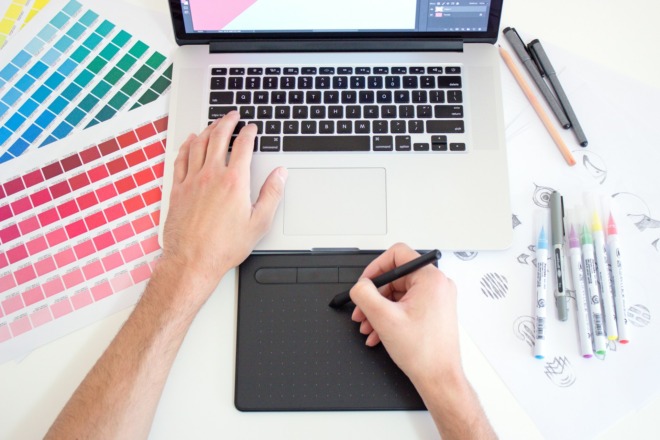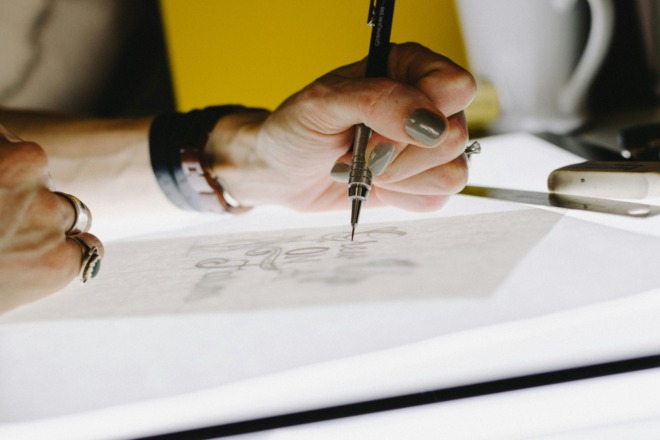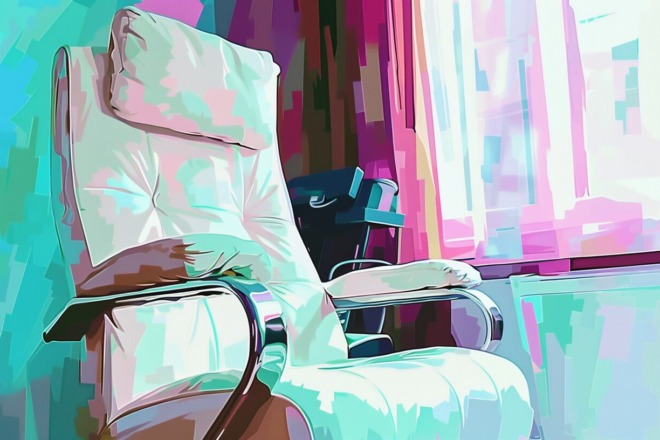The detailed work of graphic arts requires hand drawing from time to time. Whether you want to create a unique font no one else has, or you need to add in some details to a logo, combining an artist’s digital pen with a tablet allows you to both hook into your computer and take your work on the road. The best tablet for drawing is the one you feel most comfortable using.
Statista estimates tablet market revenue around $50 billion worldwide. The first touch-screen tablet hit the markets in 2010, changing the way we interact with and utilize these mobile devices. There has been a slight decline in the market in the last year or two. The drop in sales is likely due to dual-purpose laptops functioning as both a computer and a tablet in one. We include a couple of dual-purpose machines in our list of best tablets.
If you’ve decided a tablet is your next must-have item in your artist toolbox, there are some things you’ll want to consider as you move forward. Choosing the best tablet for drawing requires a bit of self-reflection and insight into the kind of work you do. Tablets run the gamut from basic, inexpensive models to high-functioning precise machines that cost $1k or more.
How Will You Use a Tablet for Drawing?
You might ask, “Which drawing tablet is best for me?” The answer resides in the ways you’ll use the device. If you’re a professional graphic artist and plan to use the technology to create hand drawn fonts and logos, you may need more control than someone using the device for occasional tweaks to designs or for recreation.
Are you a student or just getting started and need an inexpensive tablet on which you can learn? A computer and tablet are both must-haves for artists. Perhaps you’re an experienced professional and need a high-end option with every feature imaginable. The best tablet for drawing is an investment, so you’re better off getting one with the features you think you might need now and in the near future than having to upgrade before you’re financially ready.
Consider where your freelance business might grow in the next few years. The tools you use today could change over time. You may need more capabilities. Your art might advance and become more detailed. It’s better to buy more than you need than reinvesting in a new tablet a few months down the road.
Get to Know Brands
Some tablets, such as the Wacom Bamboo Create, are specifically made to be used as a best tablet for drawing. Know which brands are regularly suggested for graphic artists.
- Wacom
- DigiPro
- Apple iPad
- Microsoft Surface
- Samsung Galaxy Tab
There are many other brands available. Pay careful attention to how compatible they are with other equipment you own and the specifications. Read reviews and decide what works best for your needs based on the price point you can afford.
Although the most common brands appear repeatedly, also consider lower priced models that function in the same way and are compatible with your machine.
Go Big or Go Small
Another thing you have to consider when choosing the best tablet for drawing is screen size. Think about your creations and how much space you use on paper when making something new. If you tend to use a small space, you might get by with a smaller screen.
On the other hand, if you sketch big and then scale down after completing the drawing, a larger screen may be your best tablet for drawing needs. If possible, borrow the model you’re thinking of buying from a friend or family member and see how it works with your style. Another option is going to the store and trying out a display model.
A larger screen will likely weigh more. If you carry your tablet with you or take it on the road, the weight of the device can impact its usability. Can you easily hold the size in your hands and draw on it or will it be cumbersome?
If possible, go into a brick-and-mortar store and try the tablet out. How does it feel in your hands? Make sketching motions to get a feel for the overall way the device works for you.
Consider Responsiveness
The best tablet for drawing is responsive to the speed at which you sketch. Responsiveness refers to how fast the lines you sketch show up on the screen. If there is a delay, it can throw off the flow of your art. Your brain might not process the changes without seeing them and the finished product will look stilted and off kilter. Look for a tablet fast enough to keep up with the movements of your hands.
Keep in mind even the best table for drawing available may not be as fast as you’d like if your computer’s CPU isn’t fast enough to keep up. You have to find something that works for you, and it can take some trial and error to get the right combination. Talk to other artists about what combinations they use. Ask questions of the tech sales reps before making a purchase. The more knowledge you have, the more likely you’ll find the best tablet for drawing for the type of work you do.
Multitouch Display
The more expensive models are often the best tablets for drawing because they offer advanced features such as a multitouch display. You’ll gain the ability to touch and zoom in or out of a picture to work on those tiny details often overlooked by amateurs.
The ability to zoom in is particularly helpful when adding dimension to something already in place, such as an old logo or font. Zooming in gives you an up-close look you won’t get any other way. Although you could certainly zoom in with other controls, the multitouch option makes the action fast and almost seamless, keeping the drawing flowing smoothly.
How does a multitouch screen work? Most screens recognize a single touch. However, devices with multitouch recognize movement from two or more places at once. So you can pinch to zoom in or move two fingers apart to zoom out.
Price the Best Tablets for Drawing
How much can you expect to spend on the best tablets for drawing? Tablets start as low as $100 and go up to over $1,000. The more money you spend, the more features you’ll gain. However, you can get a really solid drawing tablet for a few hundred dollars.
Keep in mind the features mentioned above and decide what you can and can’t live without. You may want to make sure you have a pressure-sensitive model and something with little lag time, for example.
Once you have a few models in mind, compare prices at local retailers and online stores. Most tablets have a suggested retail price that will be similar across different outlets. However, you might find sales, free shipping or other perks making one shop’s offers better.
If you have a network of artist friends, ask if any of them have the same model. They may be willing to let you come by and try it out to see if it’s a good fit. Those familiar with the model can more easily point out the pros and cons you’ll encounter. You’ll have the data to make a more informed decision about which table you should buy.
List of Best Tablets for Drawing
Now that you have an idea of some of the things to look for, here are our choices for the best tablet for drawing for both beginners and advanced artists. You’ll find a range of price points.
XP-Pen Artist 12
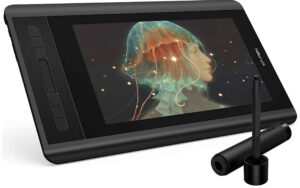
The XP-Pen Artist 12 has many of the features of higher end tablets with a price tag of only $199.99. The device connects via USB so you can monitor the look on your laptop or PC screen as you draw. There is no need to charge this tablet as it draws power from your computer and the pencil doesn’t use a battery.
The device features a 1920 by 1080 HD display and 72% NTSC Color Gamut. It supports Windows and Mac, and works with Photoshop, Illustrator, CDR, SAI and Painter.
Lenovo Yoga Smart Tab
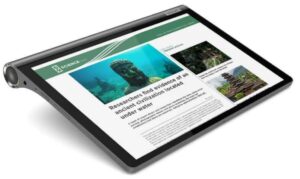
The Lenova Yoga Smart Tab is another bargain tablet with a lot of features. This is one of the best drawing tablet choices with Google assistant capability. This tablet pairs well with Android devices, since you can download that operating system’s apps directly to the device. It is a standalone where you can upload drawings to the cloud or connect it to your computer. This tablet is great for taking with you and creating content on the fly.
The Yoga Smart Tab starts at $325.68, with add ons such as a smart clock available for a bit more. The tablet is known for having a long battery life, so you can work for hours without having to stop and recharge.
Wacom Cintiq Pro 16 Graphics Tablet

Wacom is a familiar name for those researching the best tablets for artists. The Cintiq Pro 16 offers some highly advanced features for the professional wanting to up their game. However, it also comes with a hefty price tag of $1,563.76. You gain 4K resolution, multi-touch, Adobe RGB and a highly pressure-sensitive pen.
Some of the best features include an anti-glare screen, zero lag from the pen and hot keys. The screen has 8,192 levels of sensitivity and additional tilt-recognition to refine your drawing. For the price tag, one would expect to use the Cintiq anywhere but that is not the case. You must connect the tablet to a computer to draw on it.
Microsoft Surface Pro 7

The surface pro is first a computer but also can double as a drawing tablet. You’ll pay a bit more than some of the scaled down drawing tablets but you’ll be able to take it anywhere and save your designs. The tablet doesn’t come with a pen, so you’ll need to purchase one separately but it comes with a touch screen you can flip around and draw on directly.
For around $439, you’ll get an 8GB Ram, 128GB SSD machine with 10-point multi-touch screen.
Apple iPad Pro
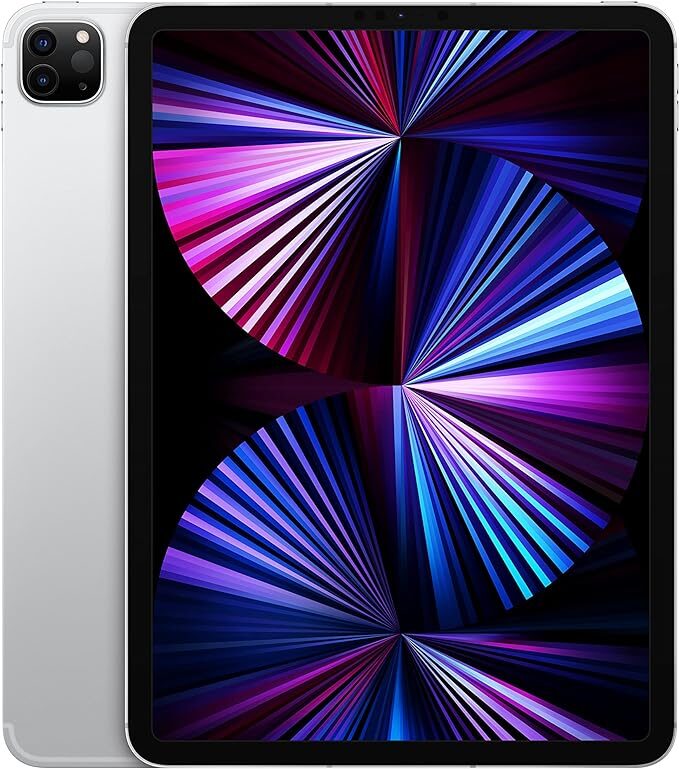
Many design schools use Apple products, so an iPad may bring a familiar feel to what you already know how to do. Although there are various models, look for one that gives you a cellular connection with plan to do work on the fly. You can upload images to the cloud or send directly to a client no matter where you’re drawing.
As with more Apple products, the interface is easy to use. The machine also is compatible with Adobe products. It does not come with a pen, so you’ll have to purchase one. It has high precision pressure points.
Expect to pay around $1,000 for an iPad with ability to connect to the internet. However, it also functions as a computer, so you’ll gain additional abilities you wouldn’t get from a drawing tablet alone.
Must-Have Features
Now that you have an idea of some of the best tablets for drawing on the market and a variety of price ranges, you might wonder which features are necessities. Although what you need depends on the type of work you do, there are some basics you’ll need to know.
Resolution
The screen resolution makes a huge difference in the finished product. The more detail and colors you see as you’re drawing, the better you can gauge the project’s completed look. Get the highest resolution you can afford, so you can add those fine details that take your work up a notch.
Pressure Sensitivity
Figuring out the pressure sensitivity requires knowing yourself as an artist. What type of graphic artist are you? If you primarily do a fix here and there, you might not need a top of the line model. However, if you do any detailed work, you’ll need to pay careful attention to pressure sensitivity. The more sensitive, the thick the line becomes with pressure.
For those creating artwork from scratch, you’ll likely need a sensitivity level of around 3,000. Those who don’t do much on-screen drawing may be able to get by with the lowest setting of 300. However, even people who don’t do a lot of hand drawing might benefit from a bit higher sensitivity than you get with a general tablet.
Some of the less expensive models don’t offer this feature at all. You may have to spend a bit more to gain access to pressure sensitivity. The harder you press, the darker the strokes will be.
Connection Capabilities
Do you want your tablet to connect directly to your computer? Do you prefer WIFI capability so you can upload directly to the cloud? Think through carefully the different scenarios and choose the one that works best for your needs now and in the future.
Tracking Speed
What are the points per second of the device. You want the tablet to keep up with you when you are highly involved in a sketch. The faster your pen moves, the more chance strokes get missed. If your device has a high points per second tracking speed, you can sketch without worrying about how fast your hand moves.
Other Considerations When Buying Tablets
The best tablet for drawing varies widely depending upon your personal needs as an artist. Think about issues such as if you’ll need long battery life, how easy the tablet is to transport and if it is compatible with things you already own, such as a digital pen and computer.
Take your time making the decision on which model suits you best. Even though it isn’t as expensive as a computer, a tablet is an investment and something you’ll use frequently for a several years. There’s no need to rush into a purchase you’ll later regret.
As an Amazon Associate, Designerly may get commissions for purchases made through links in this post.
